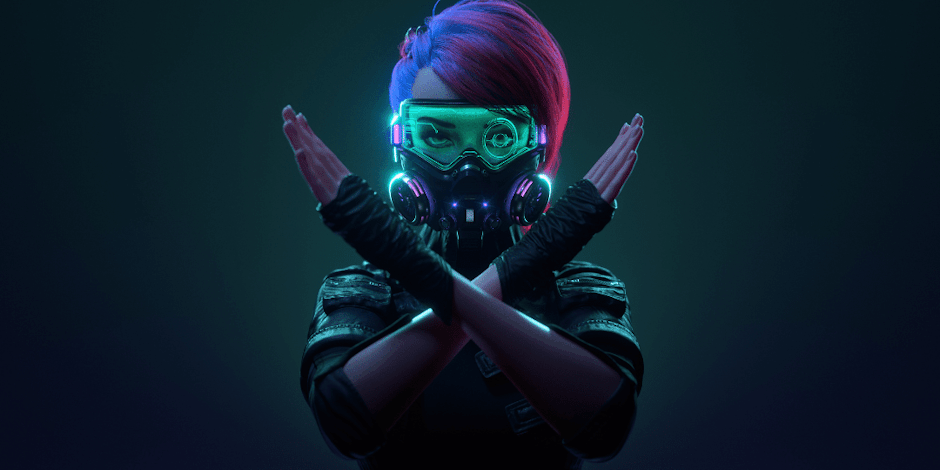#BreakTheBias of what it means to be a ‘girl gamer’
Over the past five years, the role of women in gaming has evolved astronomically

But according to new research by Anzu, female gamers in the US are lagging behind the rest of the world. For this year’s #BreakTheBias theme for International Womens’ Day, let’s look a little further into why this is happening, and how game developers and advertisers can help to close this gap.
“Girl gamers” and re-evaluating the gamer stereotype
Banish the stereotypical image of the average gamer: a man alone in the basement, hunched over a console. Around two in five gamers in the US identify as female, equating to around 91 million women. Anzu’s proprietary research shows that 57% of US female gamers spent much more time gaming through the pandemic, with almost a third expecting to continue at this level post-pandemic.
This rise in US female gamers is not only catalyzed by the pandemic giving women an outlet to relax and communicate with others. Feminist Frequency confirmed that there were more female protagonists than ever in games in 2020, with around 18% of new games having a female playable character in 2020 (compared to just 9% in 2014).
Female protagonists were also found to be more psychologically complex, moving away from the typical image of 'fewer clothes and fewer brain cells', and creating a more well-rounded, realistic representation of women in games.
More recently, there was a reported 2% rise in female influencers in the top 1000 creators on streaming platforms like Twitch, YouTube Gaming, and Facebook Gaming.
Despite the rapid increase in US female gamers, the increase of both in-game and real-life female representation through streaming, and a higher likelihood to state an increased interest in gaming, only around 43% of female US gamers ‘definitely’ identify as a gamer, compared to 67% of their male counterparts in the US. Why are we seeing such disparity?
Why fewer women in the US might identify themselves as “gamers”
There are many reasons why women in the US may be less willing to proudly call themselves a “gamer” compared to their male counterparts.
It’s no secret that the gaming industry has had its run-ins when it comes to harassment and toxic culture towards female gamers and women working in the gaming industry, both with player-led movements like #GamerGate and with alarming stories emerging from within some of gaming’s biggest development studios.
Many women still feel uncomfortable in a gaming environment, with just 10% of men and 7% of women considering games to be “inclusive”. Women have adapted to this over time by keeping gender-neutral usernames when playing games online or simply less likely to speak up in in-game chat and staying muted when playing with others for fear of harassment.
Meanwhile, although the overall number of female gamers is on the rise, the proportion of female role models and influencers in gaming compared to males is clear, with women making up just 1 in 10 of the most popular Twitch streamers in the US. As a result, male internet users were found to be twice as likely to follow online gaming influencers compared to their female counterparts in 2021.
In the US in particular, Anzu’s proprietary research shows the disparity between professional status, demographics, and income between genders, with an enormous segment of the US market as mothers that must juggle life, childcare, and family responsibilities with gaming, and even more so for the 10% of US female gamers living as a single parent. Perhaps this may be why male gamers with more disposable income are three times more likely to buy a video game than women?
Research also finds disparity even in competitive gaming - no female esports players are listed within the top 300 worldwide esports earners. This gives women less incentive to become a ‘hardcore’ competitive gamer for women, who may not see it as a viable career path when male teams are paid more.
How advertisers and developers can #BreakTheBias for female gamers
While almost three-quarters of male US gamers have recognized when they’ve been exposed to in-game advertising, only 43% of female US gamers have seen them, according to Anzu’s proprietary research. Could this be down to the game’s genre, the playtime, or brand targeting by advertisers to target men more specifically, unwittingly excluding women?
Researchers have argued that this isn’t necessarily down to just genre - female gamers tend to prefer a wide range of genres from adventure games (61%), RPG (56%), action (42%), MMORPG (40%), and strategy (31%), with plenty of crossovers into typically “male-preferred” genres.
This opens up a wider discussion that advertisers are missing a massive, untapped market in US female gamers, and on an extremely valuable marketing opportunity. One survey found that 71% of female gamers want to see improvements in gaming ads, either with more female representation, featuring female voiceovers or by showing women playing AAA titles.
“Representation is at the root of gender bias,” says Chiara Manco, commissioning editor at WARC when discussing gender parity in advertising. “If it’s lacking, it leads to a lack of opportunities. By understanding this, [brands can] turn the tide, using equal representation to challenge bias and turn the vicious cycle into a virtuous one.”
Mirrored in Anzu’s findings, just over a quarter of female US gamers are positive about seeing in-game advertising and brand placements in games, while roughly 2 in 5 are neutral to the idea. Seeing their favorite brands in games is also important to 34% of female US gamers, with just under 20% saying it’s really important to them.
All in all, this is good news for advertisers - they just have to work to win over the ‘neutral’ segment of US female gamers, and get their brands in front of an engaged, brand-savvy, and diverse audience.
Female gamers are here, growing rapidly, and forging their way into the gaming ecosystem. It’s time for the industry to catch up and listen to them.

